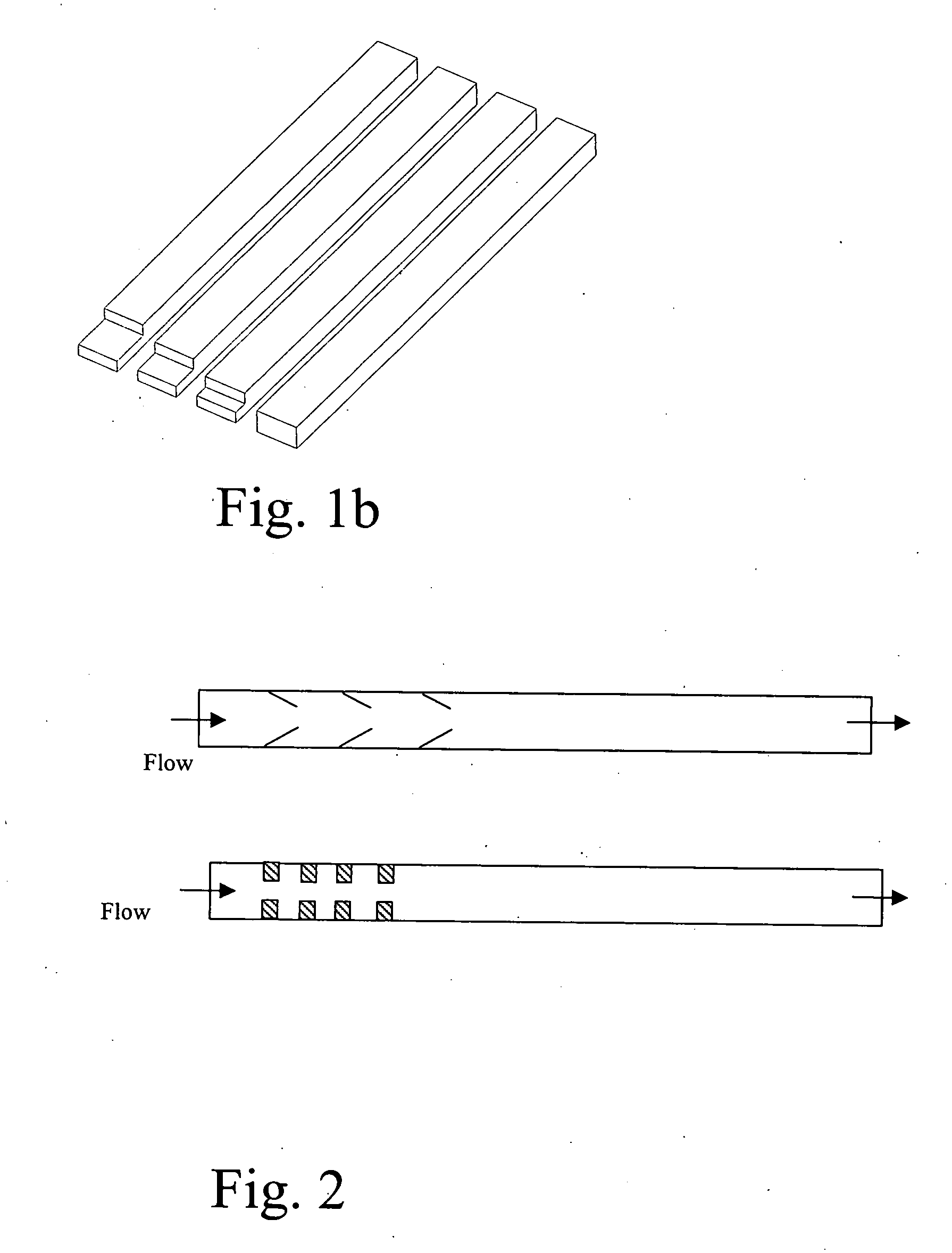Flow control through plural, parallel connecting channels to/from a manifold
- Summary
- Abstract
- Description
- Claims
- Application Information
AI Technical Summary
Benefits of technology
Problems solved by technology
Method used
Image
Examples
example
Modeling of Flow in a z-Manifold
[0116] The new gate design was modeled in a z-manifold in with the header gate of a single gate system. This system was modeled in computational fluid dynamics using the code Fluent 6.2.16. It is made from two solid laminates, laminate 1 of 0.025 cm (0.010″) thickness and laminate 2 of 0.046 cm (0.018″) flanked by two walls. The model system consists of the following flow paths:
[0117] 1. A M2M manifold that is 1.270 cm (0.500″) in width, 0.071 (0.028″) tall gap and 3.353 cm (1.320″) length. The length of the M2M manifold upstream of the header gate is 2.083 cm (0.820″) and 0.406 cm (0.160″) downstream of the header gate that ends the header M2M manifold. The M2M manifold is made up of laminates 1 and 2. The inlet has a constant mass flow rate inlet condition. The LM2M is 2.083 cm.
[0118] 2. A header gate that is 0.046 cm tall, 1.270 cm (0.500″) wide and 0.152 cm (0.060″) long, in laminate 2.
[0119] 3. The first section, or flow straightener, of leng...
PUM
 Login to View More
Login to View More Abstract
Description
Claims
Application Information
 Login to View More
Login to View More - R&D
- Intellectual Property
- Life Sciences
- Materials
- Tech Scout
- Unparalleled Data Quality
- Higher Quality Content
- 60% Fewer Hallucinations
Browse by: Latest US Patents, China's latest patents, Technical Efficacy Thesaurus, Application Domain, Technology Topic, Popular Technical Reports.
© 2025 PatSnap. All rights reserved.Legal|Privacy policy|Modern Slavery Act Transparency Statement|Sitemap|About US| Contact US: help@patsnap.com



